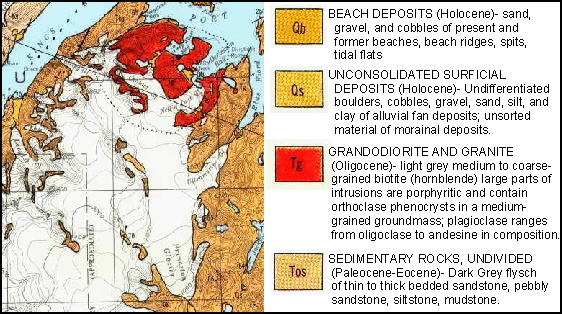 |
Bedrock geology of the study
area is dominated by Oligocene granodiorite and granite of the Nellie Juan
pluton (red, Tg). This pluton has intruded into Paleocene and Eocene
sedimentary rocks of the Orca Group (tan, Tos). Pleistocene and Holocene
glacial, fluvial and shoreline deposits overlie bedrock in many areas.
Map extract is from Tysdal, R.G. and Case, J.E., 1979, Geologic Map of
the Seward and Blying Sound Quadrangles, Alaska, U.S. Geological Survey
Miscellaneous Investigations Map I-1150, scale 1:250,000. |